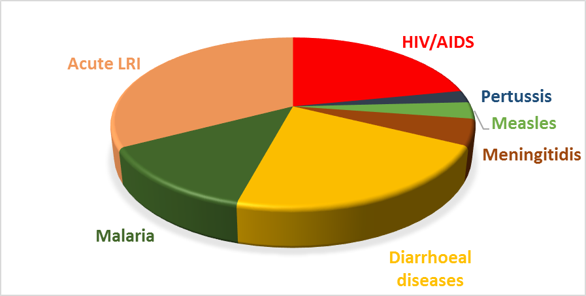The initial research necessary to develop a vaccine is often carried out not only by companies but also by research institutions financed by governments and universities. Typically, the discoveries done by these latter organizations are licensed to pharmaceutical companies for the final phases of development, given both the cost of these phases (hundreds of millions of euros/dollars) and the need to use standard, approved industrial processes necessary to obtain approval by the Regulatory Authorities. For their part, the companies naturally direct their attentions towards the development of vaccines for more developed countries, where average prices are higher. This attention to market potential is needed to guarantee an adequate return on the initial investment, both in terms of value and of time, since the companies must repay the private capital invested as well as counterbalance the high percentage of failure of development projects, as common in vaccines as in pharmaceuticals.
New Generation Vaccines
In recent years, new generation vaccines have experienced the same increase in development time and costs as other pharmaceutical products, due to a number of factors, including
- increased attention to the safety of the vaccines,
- increased research and development costs due to the guaranty use of increasingly sophisticated techniques,
- reduction of the probability of success of the projects (due to safety, regulatory concerns and efficacy),
- innovative and costlier formulations and delivery systems.
This situation, created by the progress of technology as well as by higher standards of safety and the refinement of regulatory requirements, has had two important consequences:
- on one hand, vaccines have become safer and more effective,
- on the other hand, the attention to vaccines for more advanced Countries has been greater, since only in that way can the companies recuperate their larger investment in R&D rapidly. Vaccines against diseases of interest to more developed Countries have therefore received the most attention, while vaccines of interest to Low-Income Countries have remained underfinanced or neglected even when technically feasible.
But this is not the only problem. Children under 5 years of age in poor Countries are by far the most vulnerable category: they account for 99.8% of all the infant deaths from infectious diseases.
Children are at greatest risk for many communicable diseases because their immune systems are evolving from the maternal antibodies which protect them in their very first days of life to full maturity. This means that the immune system itself in children does not respond or only partially or transitorily responds to numerous vaccines which instead generate protection in adults.
An immature immune system cannot generate an immune response against many antigens contained in vaccines which instead generate sufficient and effective protective antibody responses in adults. In order for vaccines to create an effective and lasting immune defense against the infectious diseases of early childhood, they must be purposely designed for that age group. The antigens must be presented to the immature immune system in such a way that it recognizes them and creates an immune response. This often takes place thanks to a process called conjugation, which is the connection of an antigen to a carrier which allows it to be recognized even by the immune system of the child.
Vaccines against Neglected Diseases

